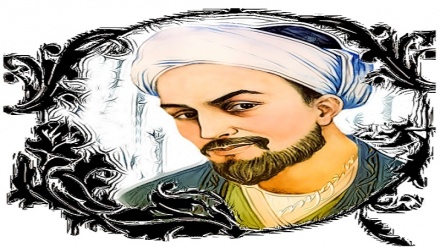Iranian notables, sources of global honor (142)
Today, we continue our discussion about the preeminent and celebrated Iranian poet, Mohammad Hussein Naziri Nayshabouri, who lived in the second half of the 10th Century AH and early 11th Century AH.
Nayshabouri is a famed poet of Farsi language, who has highly influenced his contemporary poetic currents and thereafter. Naziri is known as one of the most popular poets of his era, and many of his poetic lines are currently used as adages in the everyday conversations of people.
It was said that Nayshabouri was born in the city of Nayshabour in the second half of the 10th Century AH. He learned preliminary sciences in his hometown and catapulted into fame at a young age. In order to test his poetic skills, he traveled to the city of Kashan, attending the gatherings of poets in that city. Thereafter, he traveled to Iraq, to reinforce his capacities in composing poetry. Finally, he headed for India in order to secure a safe and comfortable life. He went to the Indian city of Agra, managing the win the support of one of his contemporary Indian officials, named Abdul-Rahim Khan. This Gurkanid official invited Naziri to his royal court; with the latter accepting this offer and invitation. Naziri accumulated a huge wealth in the royal court of this Gurkanid official, spending his wealth entirely for the safety and comfort of the Iranians who had migrated to India, especially Iranian poets and artists. In the year 1021 AH, Naziri passed away in the Indian city of Gujarat and was laid to rest over there.
As a reminder, last week it was pointed out that Naziri blended all of the positive aspects of Safavid-era poetry with a selection of previous traditions in Farsi poetry, creating an especial poetic style. He is known as one of the leading poets of Farsi language, who has left a huge impact on innumerable poets. In fact, according to literary critics, the footsteps of Naziri’s odes’ poetic style can be spotted in the collection of poems of his contemporary poets. The fact of the matter is that many renowned Iranian poets have named Naziri as one of the superior Iranian poets of the Safavid era.
Upon the study of Naziri’s collection of poems, a number of especial features are discovered in his poetic style, which distinguishes his poetry from the poems composed by his contemporary poets and thereafter.
The most important feature of his poetry is the courtesy and politeness of his language. Many literary critics believe that this feature of Farsi poetry faded away after the era of famed Iranian poet, Hafez. Meanwhile, a number of other Safavid era poets, such as Omidi Tehrani, tried to revive this aspect of Farsi poetry, and therefore the Safavid-era literary critics stated that Omidi Tehrani composed poems within the framework of ancient poetic styles. This imagination was because the courtesy of language in Farsi poetry had been left aside in 9th Century AH and afterwards, and many believed that this feature of poetry belonged to ancient times. Finally, Naziri Nayshabouri considered the courtesy of language in his poems, and revived this feature in poetry. Nonetheless, no one attributed his poetry to ancient times, because his poems were a calculated blend of all poetic necessities such as freshness of language, in addition to poetic traditions.
One of the other features of Naziri’s poems was his positive and healthy inclination towards spoken language. In the Safavid era, there was a common tendency toward usage of spoken language in poetry. However, many went to extremes in usage of spoken language in poetry, such that there was no trace of courtesy in some of the Safavid-era poems. However, Naziri was inclined to usage of spoken language in his poetry, while also maintaining the courtesy and politeness of the poetic language. Adoption of this healthy and prudent approach led to the extensive flexibility, fluidity, and amicability of the language of his odes. Many literary critics strongly believe that the extent of flexibility, fluidity, and amicability of Naziri’s poems cannot even be found in the odes composed by the preeminent poet, Sa’adi.
The renowned Indian literary figure, Allameh Shabali Na’amani, in his signature book, believes that the superiority of poems composed by a group of well-known Farsi language poets such as Sa’adi and Naziri Nayshabouri is because of the usage of spoken language, resulting in the flexibility, fluidity, and amicability of the poetic language. In the poems composed by renowned poets, such as Sa’adi and Naziri, terms and sentences that are common among Iranians have been used. Hence, many of the poetic lines of these poets are commonly used as adages among people, from all walks of life.
The poems of poets who follow “Maktab-e Woqouh” poetic style, usually intend to register real, personal, and emotional moments. However, in majority of cases, their narrations are not heartfelt and are artificial in nature.
In the Indian literary style, usually poems do not maintain fervor and enthusiasm. However, Naziri is the only poet of this poetic style who appropriately expresses real, personal, and emotional moments with a fluid, flexible, and fervent language.
MR/EA


